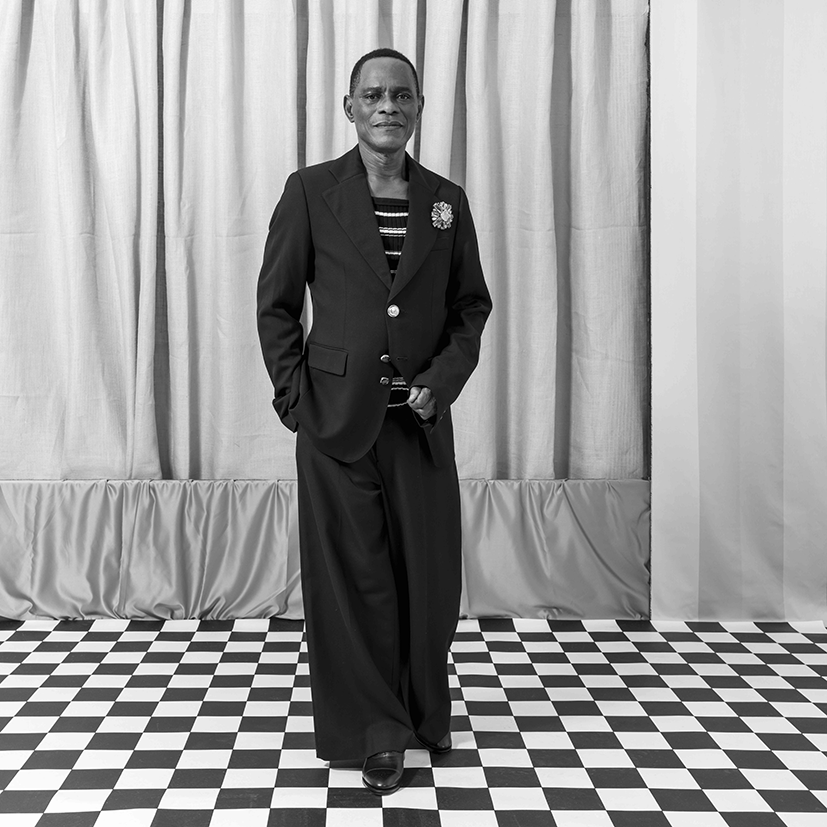The Multiple Stories of Samuel Fosso

An interview with Clothilde Morette, who curated a remarkable retrospective on Cameroon-Nigerian photographer Samuel Fosso. Featuring his most daring and impactful series, the exhibition continues at the Maison Européene de la Photographie until March 13th, 2022.
Samuel Fosso is widely recognised as one of the masters of self-portraits today. What do you think is most characteristic of his work?
Samuel Fosso’s work effectively combines the photographic medium, performance and the genre of the self-portrait. In my opinion, his ability to renew himself and embody multiple lives and stories is what makes him so unique. Fosso works on his characters in depth – whether he is creating characters set within [the French department store] Tati, or something extremely intimate, as in Mémoire d’un ami, a series in which he pays tribute to a friend who has died. Once he has grasped them, there is no longer any distance between them and himself; he becomes the people he plays.
Samuel Fosso’s various self-portrait series challenge stereotypes of gender and identity. Can we say that this contributes to the relevance of his work today?
This is an extremely interesting point. Fosso’s work contains reflections on identity issues that are key today in our way of conceiving the world. His first self-portraits, which he made as a teenager and carried on until he was 30, already break free from the classic representations of gender. He plays with the concepts of virility and masculinity with tremendous freedom. Moreover, when asked about the female characters he plays in Tati, Fosso insists that he does not act as a woman; he becomes this woman through photography. And this is perhaps something very modern and empowering, this way of playing with identity codes without even thinking about them; without any theoretical considerations; just for fun and desire.
Following the example of his Tati series, which shifts the perspective to archetypal characters from a Western perspective, might Samuel Fosso’s work be suggesting a new perception of history and the world?
I don’t know if we can talk about a “new perception of history and the world” because, ultimately, what Fosso offers through his work remains a glance at the world through a non-Western prism, and we are not so used to it (which is unfortunate). Fosso has now lived for many years between the Central African Republic, Nigeria and France. He has exposed his work in many museums worldwide and, from his numerous travels as well as from this life shared between the African and European continents, he kept a very acute awareness of the power relationships that still exist. This is what he puts into perspective in his work.
One of the series presented at the Maison Européenne de la Photographie was conceived with the designer Grace Wales Bonner. Does this speak to the strong link between the photographer and fashion?
Especially in Samuel’s work! Fashion, clothes, accessories are key elements in his work. It’s not superficial at all. When he thinks about his series, clothes are an essential part of the construction of the characters. He has a very playful and joyful relationship with clothes. In fact, before the series with Grace Wales Bonner, he did a photo shoot for Vogue magazine in 1999. Of course, he was the model, the photographer and the art director!
To speak from a more general point of view, at the MEP we have exhibited many photographers who have a very strong link to fashion photography, such as Coco Capitán or Ren Hang. I am also thinking of Estelle Hanania who explained to me that the photos she takes involving fashion feed her imagination and inspire her personal work. This interview has been lightly edited for clarity.



